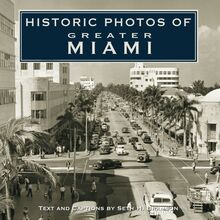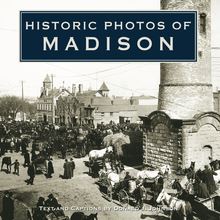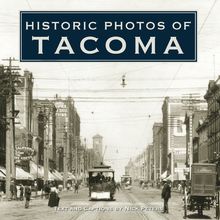Historic Photos of Alexandria , livre ebook
183
pages
English
Ebooks
2008
Vous pourrez modifier la taille du texte de cet ouvrage
Obtenez un accès à la bibliothèque pour le consulter en ligne En savoir plus
Découvre YouScribe en t'inscrivant gratuitement
Découvre YouScribe en t'inscrivant gratuitement
183
pages
English
Ebooks
2008
Vous pourrez modifier la taille du texte de cet ouvrage
Obtenez un accès à la bibliothèque pour le consulter en ligne En savoir plus
Publié par
Date de parution
01 janvier 2008
Nombre de lectures
4
EAN13
9781618585943
Langue
English
Poids de l'ouvrage
14 Mo
Publié par
Date de parution
01 janvier 2008
Nombre de lectures
4
EAN13
9781618585943
Langue
English
Poids de l'ouvrage
14 Mo
HISTORIC PHOTOS OF
ALEXANDRIA
T EXT AND C APTIONS BY J ULIE B ALLIN P ATTON AND R ITA W ILLIAMS H OLTZ
Government Coal Wharf. (ca. 1863)
HISTORIC PHOTOS OF
ALEXANDRIA
Turner Publishing Company
200 4th Avenue North Suite 950
Nashville, Tennessee 37219
(615) 255-2665
www.turnerpublishing.com
Historic Photos of Alexandria
Copyright 2008 Turner Publishing Company
All rights reserved.
This book or any part thereof may not be reproduced or transmitted in any form or by any means, electronic or mechanical, including photocopying, recording, or by any information storage and retrieval system, without permission in writing from the publisher.
Library of Congress Control Number: 2007933764
ISBN: 978-1-59652-413-2
Printed in China
09 10 11 12 13 14 15-0 9 8 7 6 5 4 3 2
C ONTENTS
A CKNOWLEDGMENTS
P REFACE
F ROM C IVIL W AR TO C ENTURY S E ND (1860-1899)
A N EW C ENTURY AND A W ORLD W AR (1900-1919)
H ARD T IMES AND E CONOMIC C HALLENGES (1920-1939)
T HE W AR Y EARS AND P OSTWAR P ROSPERITY (1940-1970 S )
N OTES ON THE P HOTOGRAPHS
The 1971 T. C. Williams High School Varsity Football team, the Titans. The story of this team winning the state high school football championship was the basis for the movie Remember the Titans .
A CKNOWLEDGMENTS
This volume, Historic Photos of Alexandria , is the result of the cooperation and efforts of many individuals and organizations. It is with great thanks that we acknowledge the valuable contribution of the following for their generous support:
The Alexandria Library, Special Collections
The Library of Congress
The writers wish to thank George Combs, director of Alexandria Library, Special Collections, for allowing us the time to work on this book, and Michele Lee, Librarian at the Alexandria Library, Special Collections, for her extensive help in editing the manuscript. We also wish to thank the rest of the staff at Special Collections for their support during this project.
P REFACE
Alexandria has thousands of historic photographs that reside in archives, both locally and nationally. This book began with the observation that, while those photographs are of great interest to many, they are not easily accessible. During a time when Alexandria is looking ahead and evaluating its future course, many people are asking, How do we treat the past? These decisions affect every aspect of the city-architecture, public spaces, commerce, infrastructure-and these, in turn, affect the way that people live their lives. This book seeks to provide easy access to a valuable, objective look into the history of Alexandria.
The power of photographs is that they are less subjective than words in their treatment of history. Although the photographer can make decisions regarding subject matter and how to capture and present it, photographs do not provide the breadth of interpretation that text does. For this reason, they offer an original, untainted perspective that allows the viewer to interpret and observe.
This project represents countless hours of review and research. The researchers and writers have reviewed thousands of photographs in numerous archives. We greatly appreciate the generous assistance of the individuals and organizations listed in the acknowledgments of this work, without whom this project could not have been completed.
The goal in publishing this work is to provide broader access to this set of extraordinary photographs that seek to inspire, provide perspective, and evoke insight that might assist people who are responsible for determining Alexandria s future. In addition, the book seeks to preserve the past with adequate respect and reverence.
With the exception of touching up imperfections caused by the damage of time and cropping where necessary, no other changes have been made. The focus and clarity of many images is limited to the technology and the ability of the photographer at the time they were taken.
The work is divided into eras. Beginning with some of the earliest known photographs of Alexandria, the first section records photographs through the end of the nineteenth century. The second section spans the beginning of the twentieth century through World War I. Section Three covers the years between the wars and the last section covers the World War II era to recent times.
In each of these sections we have made an effort to capture various aspects of life through our selection of photographs. People, commerce, transportation, infrastructure, religious institutions, and educational institutions have been included to provide a broad perspective.
We encourage readers to reflect as they go walking in Alexandria, strolling through the city, its parks, and its neighborhoods. It is the publisher s hope that in utilizing this work, longtime residents will learn something new and that new residents will gain a perspective on where Alexandria has been, so that each can contribute to its future.
-Todd Bottorff, Publisher
Star Fire Company, located at 116 S. St. Asaph Street. The company changed its name to the Columbia Steam Fire Engine Company in 1871. (1867)
F ROM C IVIL W AR TO C ENTURY S E ND
(1860-1899)
Alexandria s history as a European settlement dates to 1654 when a land patent was granted to Margaret Brent by the Royal Governor of Virginia. In the 1740s, Phillip and John Alexander, whose family had purchased land in the area in 1669, and other landholders, petitioned the General Assembly for the creation of a town. Alexandria was officially founded in 1749. In subsequent years, the community grew as a seaport and farming community. Land was added by filling in parts of the Potomac shoreline, and lots were sold around town to expand the city limits. In the 1790s, Alexandria was included in a section of northern Virginia that became part of the new District of Columbia. One of the original boundary stones of the capital District still stands at Jones Point, the southern boundary of Alexandria.
Although the ports of Baltimore and Georgetown eventually overtook Alexandria as the primary shipping points for the upper Chesapeake area, the city continued to manufacture and export many goods, including grain and fish. The city eventually became a central railroad hub. Alexandria was also an important link in the domestic slave trade. In 1847, unhappy with the economic stagnation and abolitionist agitations of the District of Columbia, residents of Alexandria County and Arlington voted to separate from the capital city. This retrocession, or return, to Virginia allowed Alexandrians to have the governmental representation they were denied as part of the federal district and to continue to carve an identity that was quintessentially Southern.
Virginia seceded from the Union on April 17, 1861, and Federal troops arrived in Alexandria almost immediately to occupy the city-Alexandria was occupied during the Civil War longer than any other city of the South. Alexandria s superior rail and water transportation networks were put to use by the Federal army. Many large buildings were confiscated for use as hospitals and warehouses, to the great distress of citizens. The Civil War left the economy in shambles and Alexandrians struggled to rebuild. Like other Southern cities, they clung to the few industries left and began slowly to recover from the war during Reconstruction.
Colonel Elmer Ellsworth and James Jackson died at the Marshall House. When Ellsworth removed a Confederate flag from the roof, he was shot by Jackson, the proprietor, who in turn was killed by another Union soldier. (May 24, 1861)
One of many stockades erected, this one was built along Union Street, to prevent Confederate sympathizers from sabotaging the buildings and docks along the waterfront held by the Union. (ca. 1861)
The frigate Pensacola lies at anchor in Alexandria Harbor. A second-class steamer, weighing 2,158 tons, the Pensacola was built in Florida and completed at the Washington Navy Yard. She was a part of the naval fleet commanded by Admiral David G. Farragut. (ca. 1861)
Union soldiers stand at attention outside the Slave Pen in the 1300 block of Duke Street. (ca. 1862)
A woman stands beside the Slave Pen located in the 1300 block of Duke Street. (ca. 1862)
Curious Union soldiers investigate the interior of the Slave Pen on Duke Street. Dirt floors, iron-bar doors, and small, almost windowless cells tell a grim tale. (ca. 1862)
The United States Military Railroad construction corps planes boards along the Alexandria waterfront. (ca. 1862)
The United States Military Railroad carpenter shop. (ca. 1862)
Construction corps workers for the United States Military Railroad complete the building of portable bridge trusses. (ca. 1862)
Military personnel inspect the trusses used to build railroad bridges. (ca. 1862)
Officers of the 1st District Volunteers and civilians pose for the photographer in front of the City Hotel. (ca. 1862)
St. Paul s Episcopal Church, located at 228 S. Pitt Street, was used as a Federal hospital during the Civil War. The rectory was used as a commissary. (ca. 1862)
The 44th New York Infantry encampment at the top of Shuter s Hill. This location gave occupying troops an unobstructed view of the Potomac River. (ca. 1862)
The Protestant Episcopal Theological Seminary. Aspinwall Hall s pagoda-style steeple was and still is a familiar landmark. The hall was used as a Union hospital, and other buildings on the grounds were used for housing. (ca. 1862)
Soldiers and civilians mill around Aspinwall Hall on the grounds of the Protestant Episcopal Theological Seminary.














